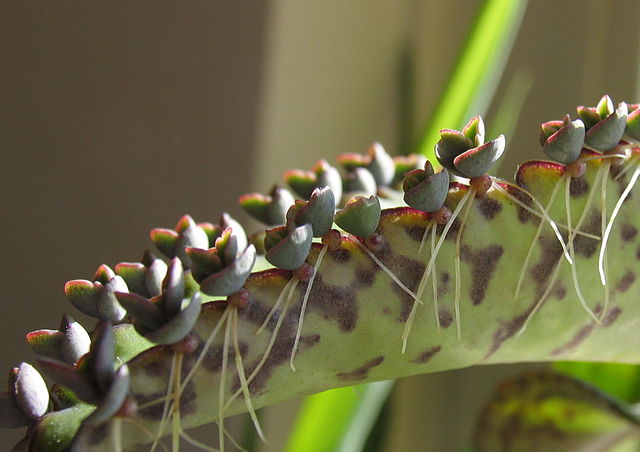A plant cutting is a piece of a plant that is used in horticulture for vegetative (asexual) propagation. A piece of the stem or root of the source plant is placed in a suitable medium such as moist soil. If the conditions are suitable, the plant piece will begin to grow as a new plant independent of the parent, a process known as striking. A stem cutting produces new roots, and a root cutting produces new stems. Some plants can be grown from leaf pieces, called leaf cuttings, which produce both stems and roots. The scions used in grafting are also called cuttings.
A magnolia stem cutting has been coaxed to form new roots, and is now a complete plant.
Cutting from Coleus scutellarioides – after 14 days the roots are 6 cm long.
Softwood cuttings of elm (Ulmus) are kept under a water mist to prevent them from drying out while they form roots.
Cuttings from a variety of plants.
Vegetative reproduction is a form of asexual reproduction occurring in plants in which a new plant grows from a fragment or cutting of the parent plant or specialized reproductive structures, which are sometimes called vegetative propagules.
Production of new individuals along a leaf margin of the air plant, Kalanchoe pinnata. The small plant in front is about 1 cm tall. The concept of "individual" is stretched by this process.
Kalanchoe daigremontiana produces plantlets along the margins of its leaves. When they are mature enough, they drop off and root in any suitable soil beneath.
Vegetative reproduction from a stem cutting less than a week old. Some species are more conducive to this means of propagation than others.
A bulb of Muscari has reproduced vegetatively underground to make two bulbs, each of which produces a flower stem.








